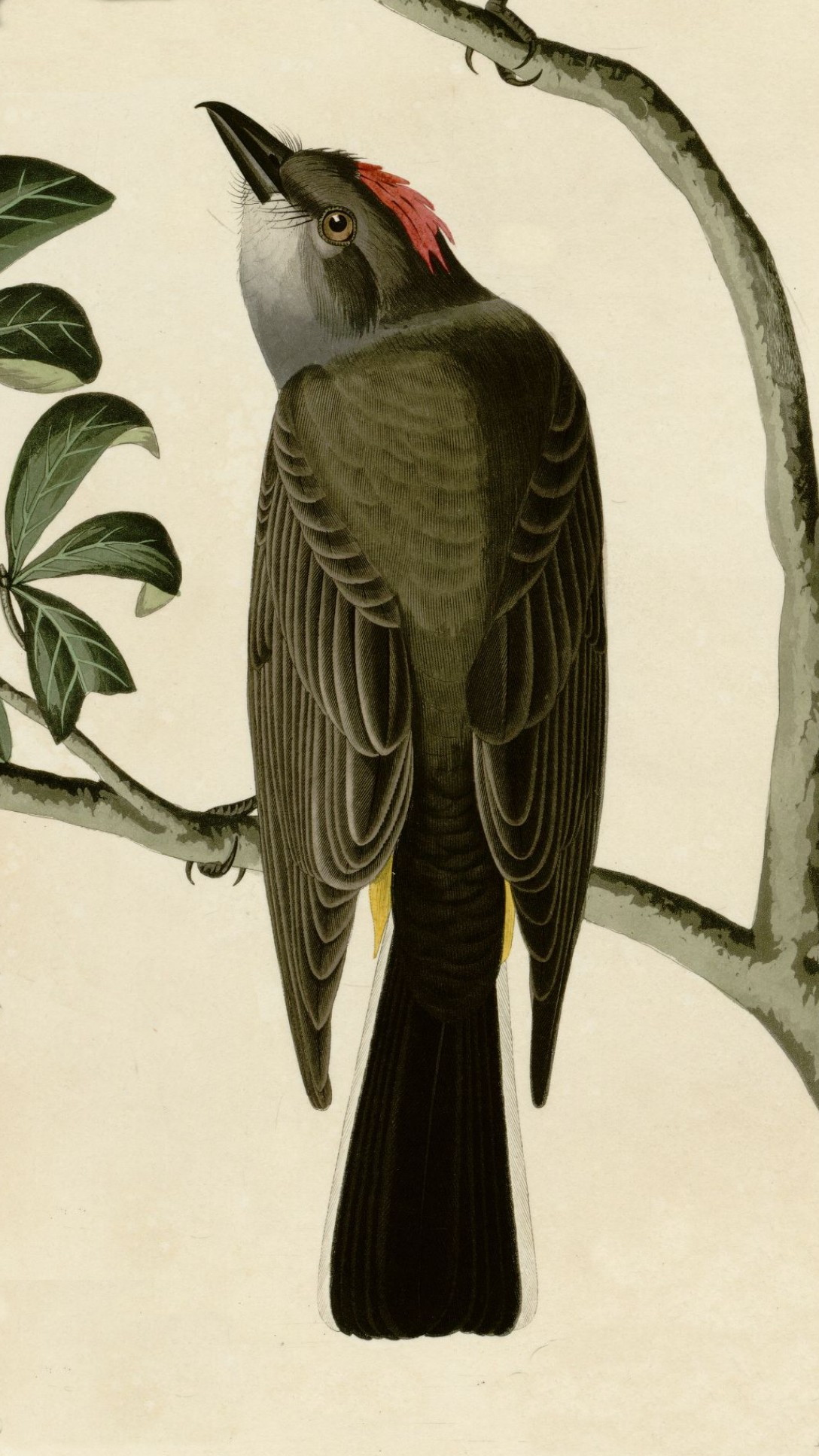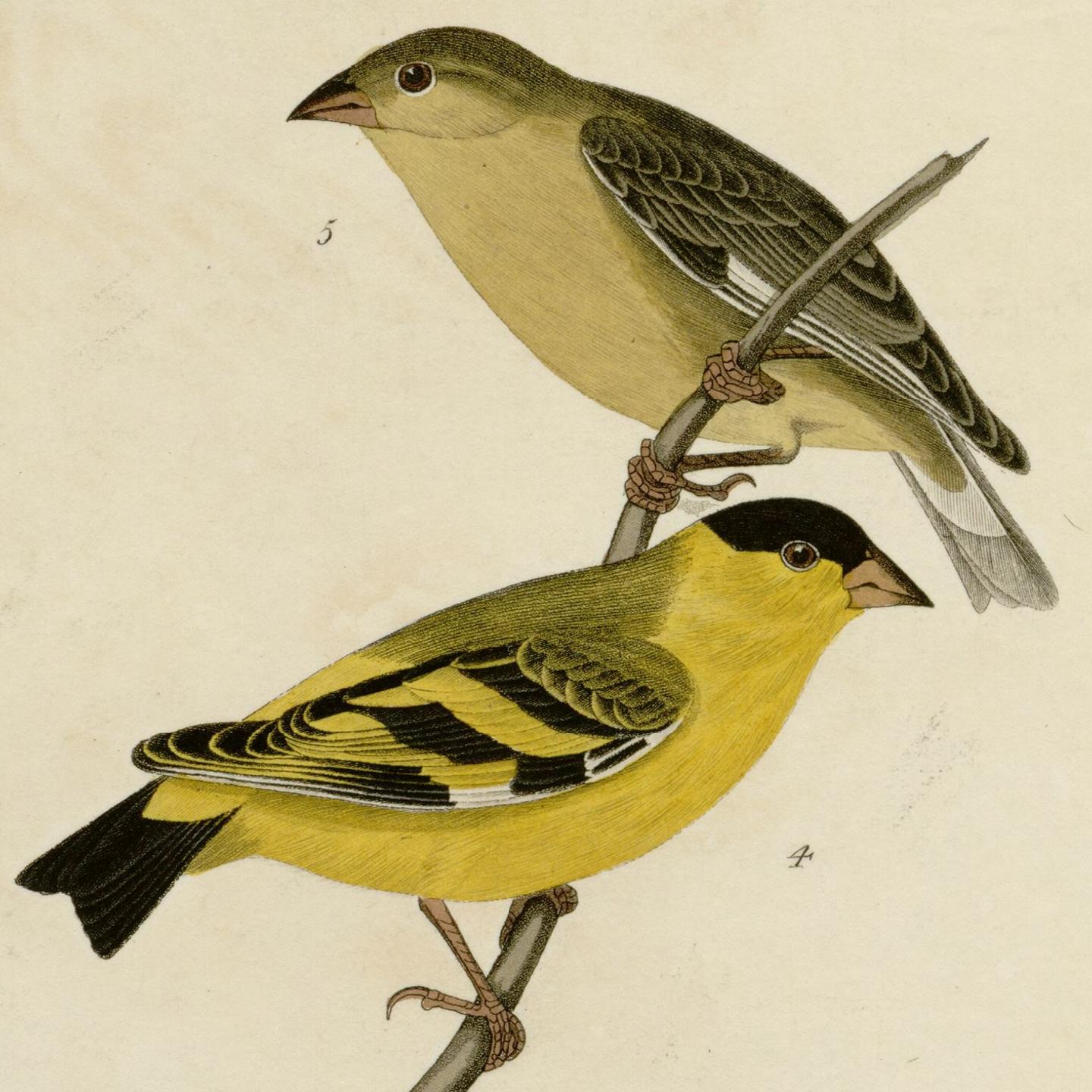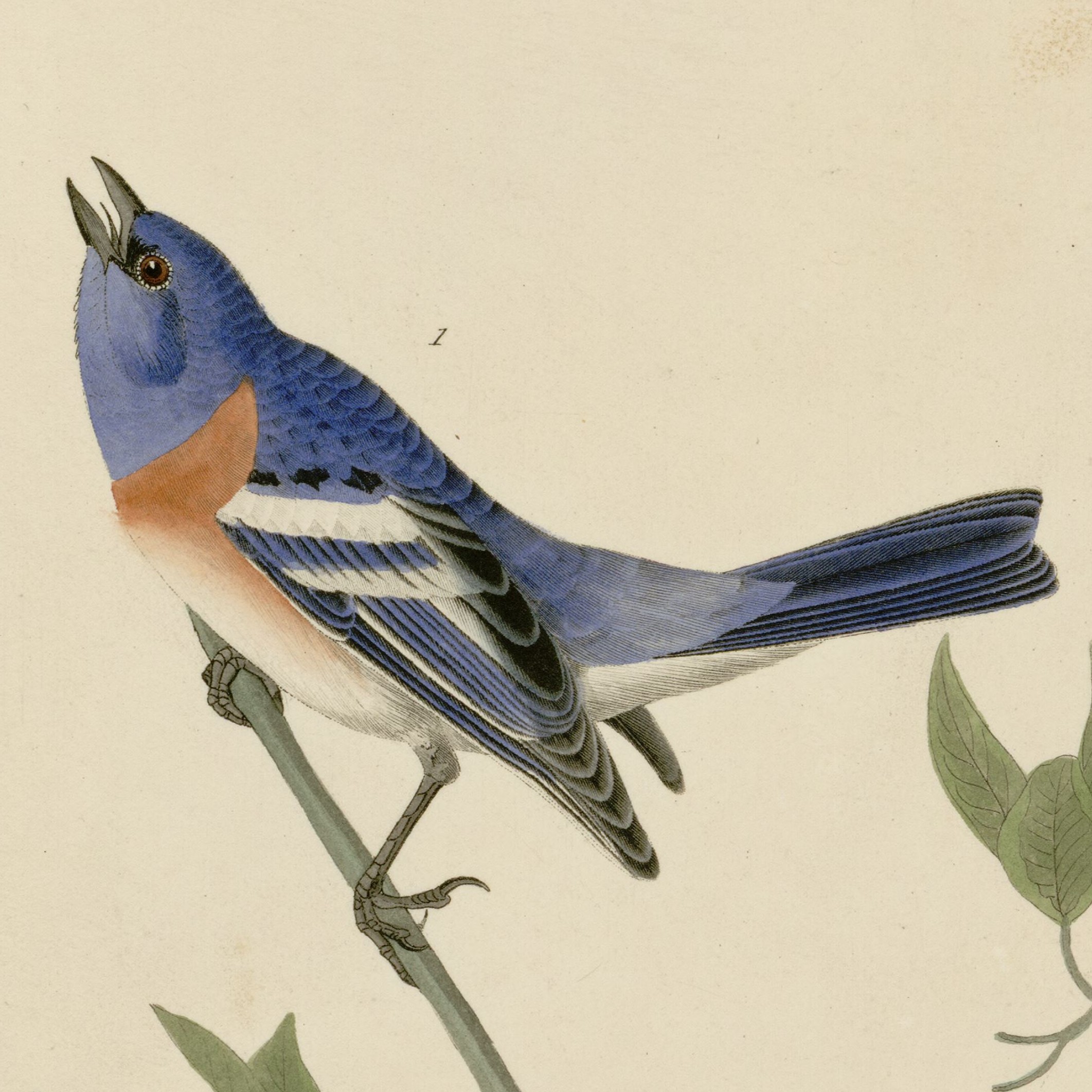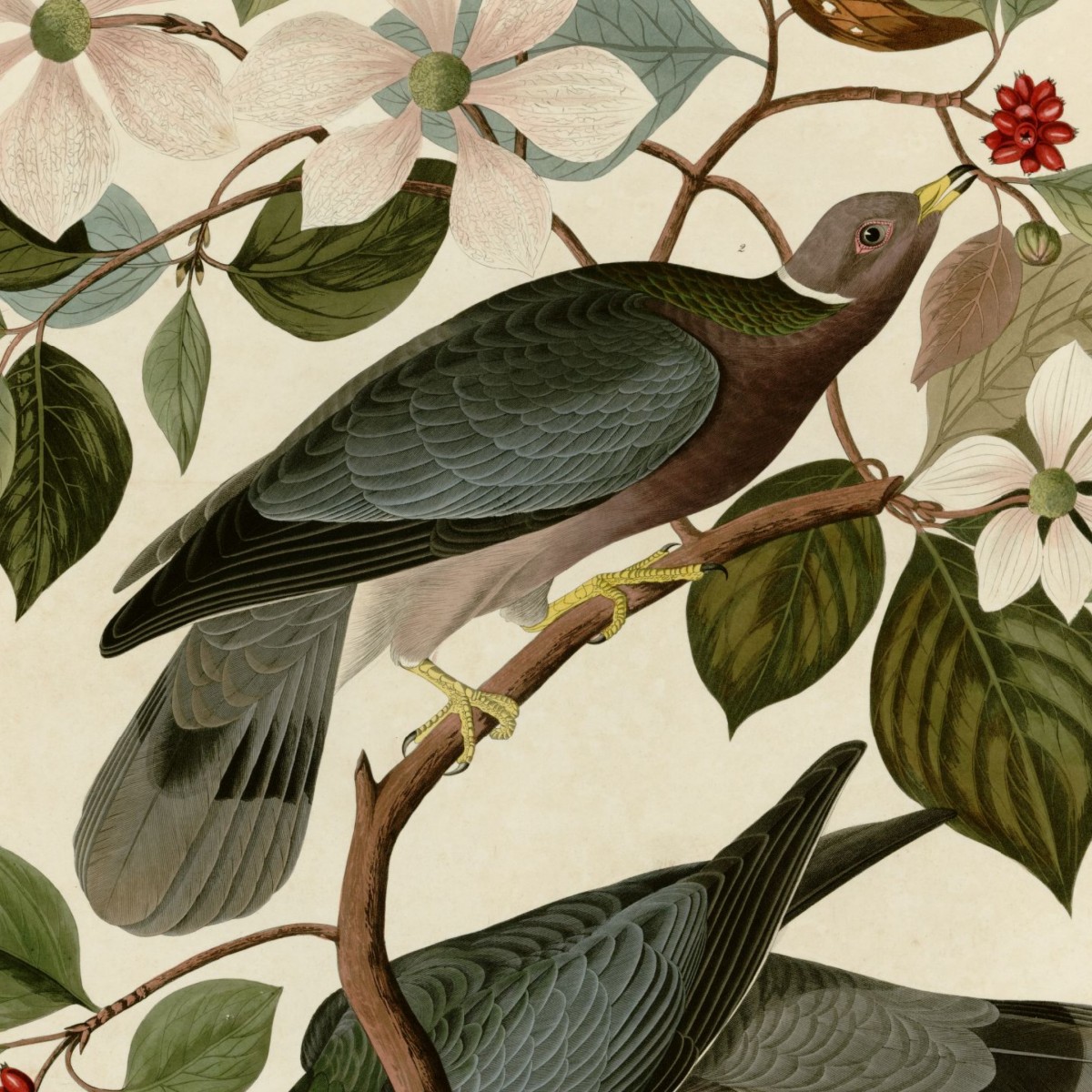Among the birds first described by Thomas Say are several featured in a book often called the world's most popular bird book:
John James Audubon, The Birds of America, four volumes, 1827-1838.
Seen here are reproductions for four "Say birds" from Audubon's famous book. Say's descriptions of these birds are found in
Edwin James, Account of an Expedition from Pittsburgh to the Rocky Mountains, Performed in the Years 1819 and 1820, By Order of The Hon. J. C. Calhoun, Sec'y of War: Under the Command of Major Stephen H. Long, from the Notes of Major Long, Mr. T. Say, and Other Gentlemen of the Exploring Party, two volumes, Philadelphia, 1823. Reprinted in book form by University Microfilms, Inc., Ann Arbor, 1966.
Tyrannus verticalis (Say); common name, western kingbird

In volume 2, page 60, Say describes the species shown and named here.
Carduelis psaltria (Say); common name, lesser goldfinch

Say's description of the lesser goldfinch is given in James, volume 2, page 40. Say assigned the species to the genus Fringilla, but it was later reassigned to the genus Carduelis.
Passerina amoena (Say); common name, lazuli bunting

The lazuli bunting is first described by Say in James, volume 2, page 47. Aside from the anatomical description, Say writes, "A very beautiful species of emberiza was caught, rather smaller than the indigo bunting (Emberiza cyanea), with a note entirely dissimilar. It was observed to be much in the grass, rarely alighting on bushes or trees."
Say assigned the species to Emberiza but it is now assigned to Passerina.
Columba fasciata (Say); common name, band-tailed pigeon

In vol. 2, page 10, Say writes, "A beautiful species of pigeon was shot near the mountain...," along a small tributary of the Platte River near the Rockies, July 9, 1819. "It may be distinguished by the name of band-tailed pigeon," and then Say assigns the species name fasciata, within the genus Columba. Hence, the name Columba fasciata Say; common name, band-tailed pigeon.